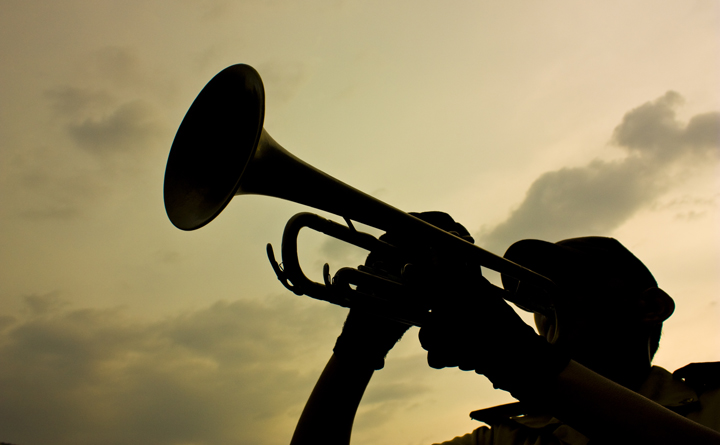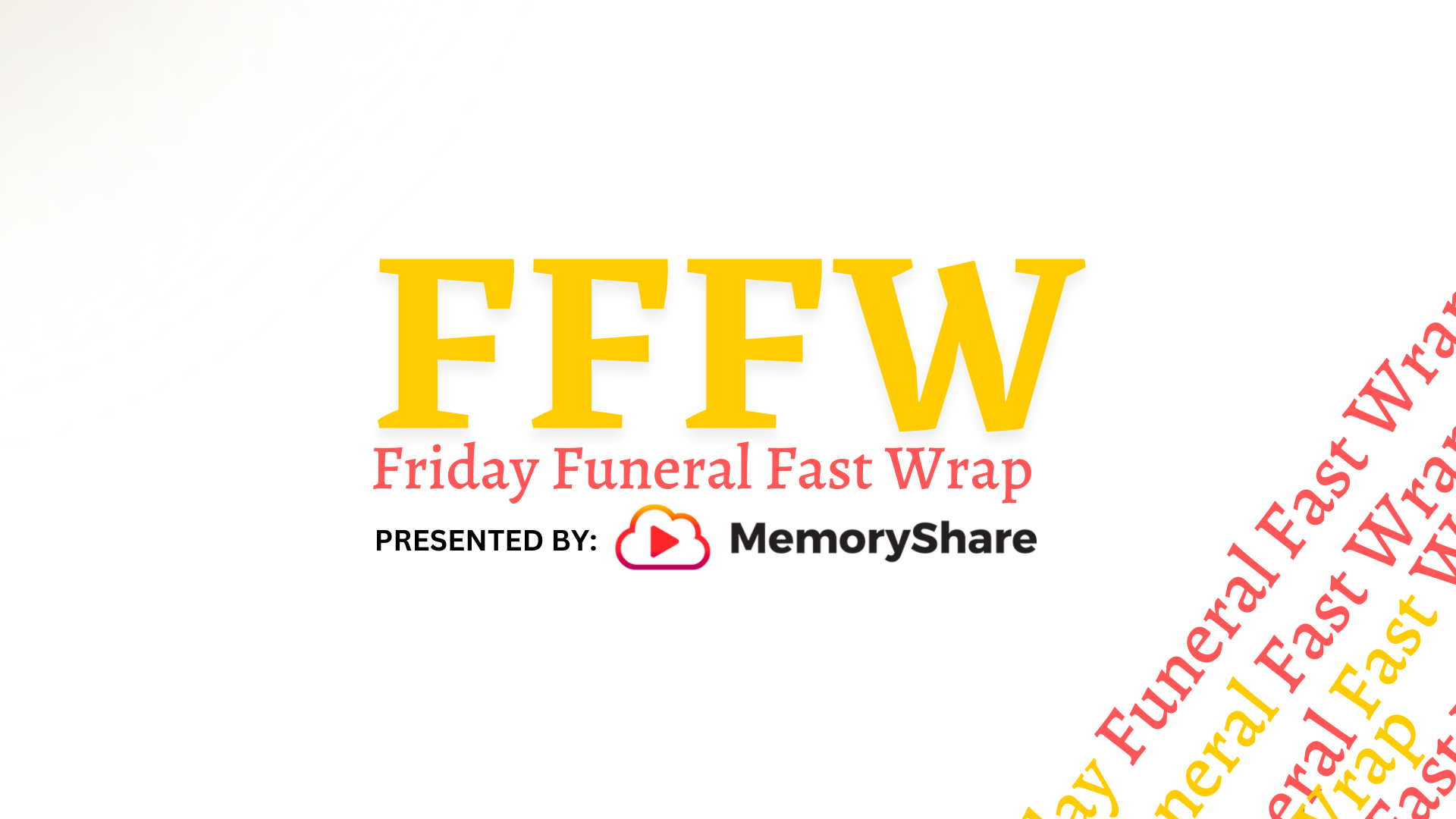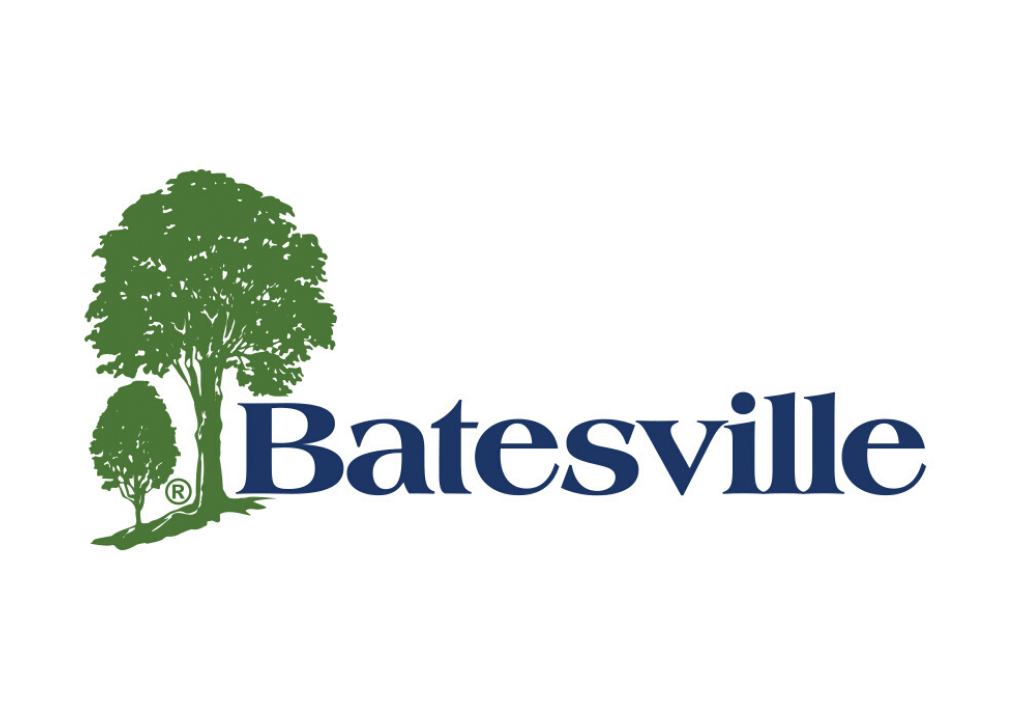A Song that Taps into the Emotions
 There are only 24 melancholic notes in “Taps” that was written 150 years ago to close a soldier’s day.
There are only 24 melancholic notes in “Taps” that was written 150 years ago to close a soldier’s day.
Article By: MySendoff.com
For 150 years the military song “Taps” has been the world’s most recognizable call signal to commemorate soldiers who have served in wars. Particularly played during flag ceremonies and funerals, and often performed on a bugle or trumpet, the song sometimes known as “Butterfield’s Lullaby” or “Day is Done” has had a history as mesmerizing as the tune itself.
As the story goes, it was in 1862, the Civil War was raging in the South as the Union fought the Confederacy to stop the Southern States of the United States of America from seceding. Among those in the Union Army was a Captain by the name of Robert Ellicombe, who was stationed with his men in Virginia during the Peninsula Campaign and fought the Confederate Army in an attempt to capture the Confederate capital of Richmond.
As the men settled for the night, Ellicombe heard the moan of a soldier who lay mortally wounded on the field. Despite not knowing if the man was a Union or Confederate soldier, Ellicombe risked his own life to make his way to where the soldier lay so he could bring the man back to camp to receive medical attention.
Through gunfire and darkness, Ellicombe crawled on his stomach until he reached the soldier, quickly pulling him back to encampment. When the Captain reached his own lines, he soon discovered the man to be a dead Confederate soldier, but as the Captain lit the lantern he discovered something else.
Losing his breath and going numb with shock, Ellicombe could see through the dim light that the Confederate solider was his own son – a boy who had been studying music in the South when the war broke. Without telling his father, Ellicombe’s son had enlisted in the Confederate Army.
Heartbroken and disconsolate, the father sought out his superiors the following morning seeking permission to give his son a full military burial despite his enemy status. However, while his request was partially granted, he was denied the request of having a group of Army band members play a funeral dirge for his son at the funeral. Though out of respect for the Captain, he was granted one musician.
Choosing a bugler, Ellicombe asked the musician to play a series of musical notes he had found on a piece of paper that had been folded in the pocket of his dead son’s uniform. It was on this day that the bugler began playing the haunting melody now known as Taps,which has become a traditional tune for military funerals… or so the story goes.
For years, the story of Captain Ellicombe has circulated the internet as a touching tale of the first use of the Taps song, however, the origin of the song’s creation transcends beyond the legend that has long been told.
As one of the most easily recognized melodies today, Taps has been deemed to be both eloquent and haunting – a tune that has long been played at military funerals as a commemorative piece recognizing the death of a soldier. But while the story of Captain Ellicombe is a thing of legends, the truth of the origin of the song still finds its place during the Civil War.
It was in 1862, the Army of the Potomac was in camp, resting and recovering from its losses during the seven days of battle at Harrison’s Landing on the James River. With the loss of 600 men and wounded himself, General Daniel Adams Butterfield had grown dissatisfied with the call for Extinguishing Lights (the song played to declare lights out for the night), feeling it sounded too formal to signal the day’s end and requested a bugler to attend his company.
Handing an envelope with musical notes written on the back to Brigade bugler Oliver Wilcox Norton, Butterfield asked the musician to play the tune.
Butterfield had admitted that while he could sound bugle calls as a necessary part of military knowledge and instruction for an officer commanding a regiment or brigade, he could not write a note of music, but rather had his wife write the notes from his whistling it to her.
That night, as Norton sounded the notes on his bugle, the two men lengthened and shortened the notes until they settled on a sound that was melodious and slow enough to suit Butterfield. When all was finished, Butterfield requested that the call for Taps thereafter be played as regulation call.
Though Butterfield never composed the tune, which had been nicknamed “Butterfield’s Lullaby”, it was a revision of a French version of the “Scott Tattoo”, a bugle call used to order soldiers to leave a tavern and return to their quarters for the night. The word Taps can also refers to the dutch word Taptoe, which was known as a drum roll command similar to the “Scott Tattoo” that signalled the end of the day and a time for tavern keepers to turn off their keg spigots, or taps. The taps can often be referred to as the tapping of the drums.
The next day, Norton was visited by several buglers from neighboring Brigades asking for copies of the music which had been finished. While Taps was not authorized as a substitution for the regulation call, it quickly found its way to other Brigades, and by 1863, it became adopted by Confederate soldiers, before being included in the Confederate Army’s mounted artillery drill manual.
Though popular amongst many Brigades, Butterfield had said his true intention of composing an alternative call was so his Brigade would have their very own call. It was a strategic move that would allow Butterfield to command a mile long march on the road through which he could order soldiers to halt, lie down, rise or start instantly in unison.
In 1862, Taps soon found its call being played for a military funeral service for the first time when Captain John Tidball presided over the burial of one of his fallen men. As was commonly done during military funerals, tradition ordered that three rifle volleys be fired at the ceremony. However, Tidball and his troops were hidden in the woods and feared the nearby enemy would hear the gunshots and determine their location. As a substitution for the rifle volley, the Captain ordered the bugler to sound Taps.
It wasn’t long before Taps became an unofficial custom for not only Union Army funerals but Confederate Army funerals as well.
After the Civil War, the song was adopted throughout the military, becoming officially recognized by the US Army in 1874, and becoming standard at military funeral ceremonies in 1891. However, it was on November 25, 1963 that Taps became immortalized in the world when a rendition was played at the funeral of President John F. Kennedy.
As a World War II veteran, Kennedy was buried with full military honors at the Arlington National Cemetery. With a televised funeral ceremony, the world saw the command for present arms, watched the traditional three volleys being fired and heard the hauntingly tune known as Taps.
Along with the bugle melody for Taps the words to the tune are:
Day is done,
Gone the sun,
From the lakes,
From the hills,
From the sky,
All is well,
Safely rest,
God is nigh
Fading light,
Dims the sight,
And a star,
Gems the sky,
Gleaming bright,
From afar,
Drawing nigh,
Falls the night
Thanks and praise,
For our days,
Neath the sun,
Neath the stars,
Neath the sky,
As we go,
This we know,
God is nigh
Listen to the song: Military Taps | YouTube




